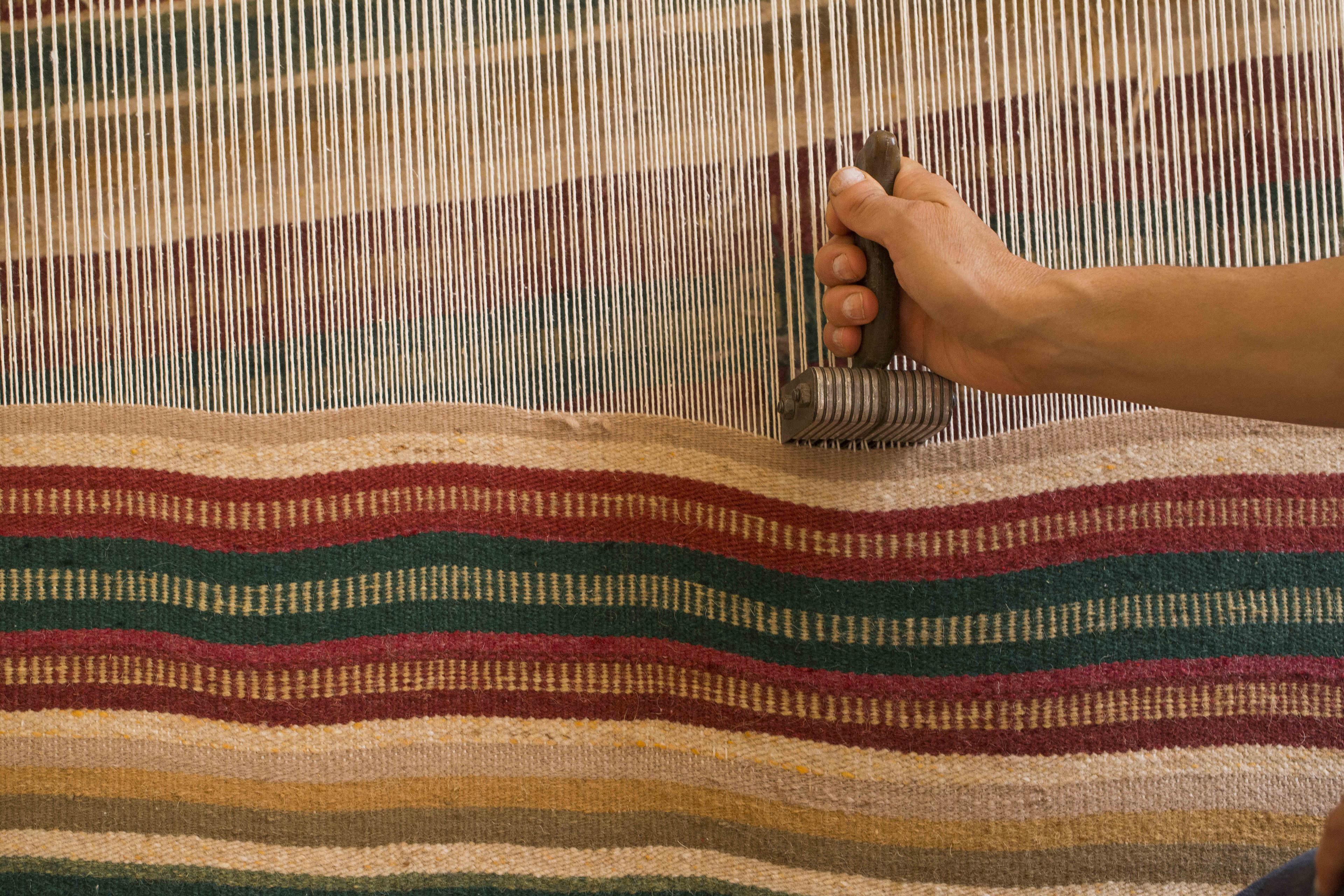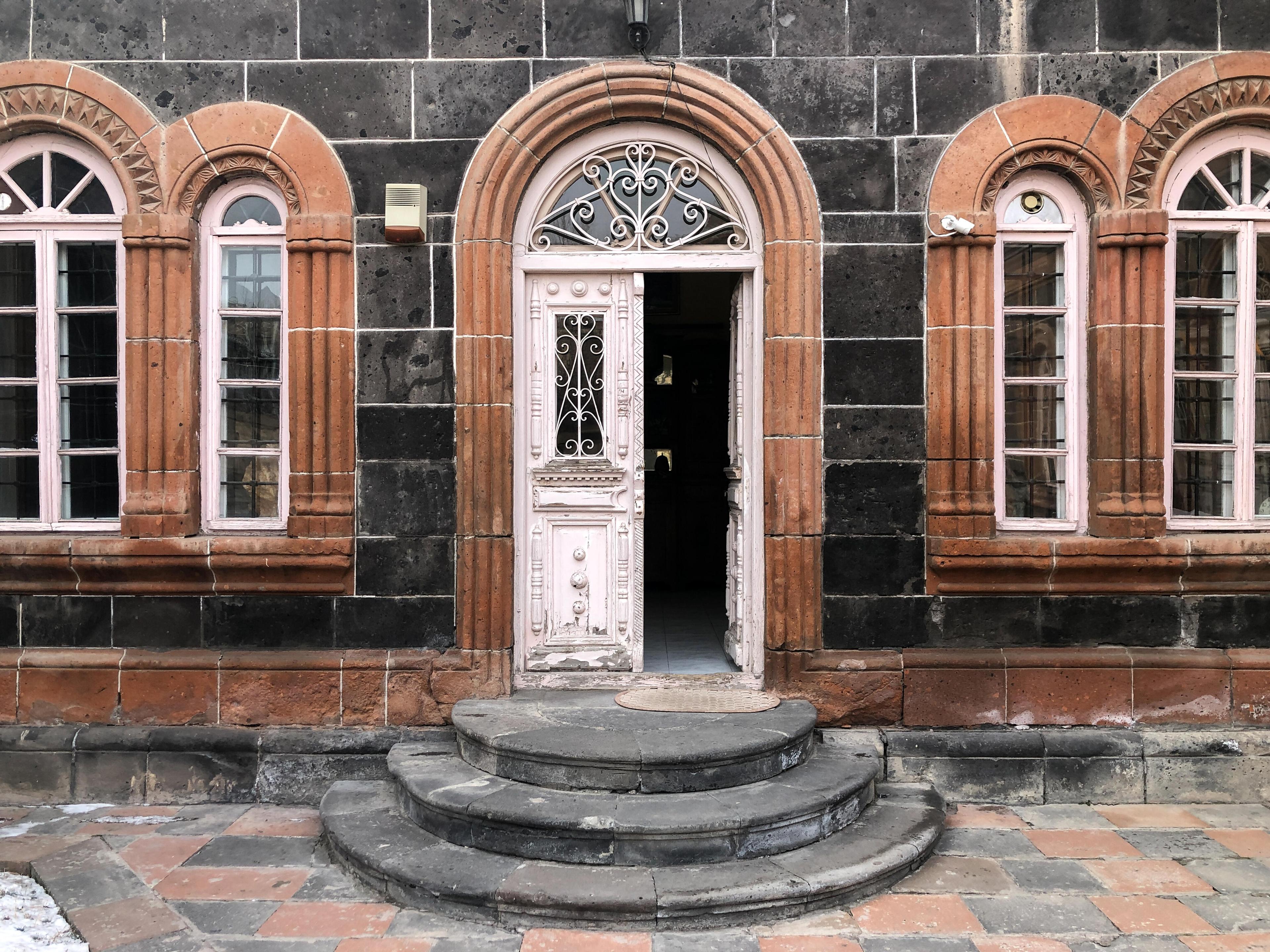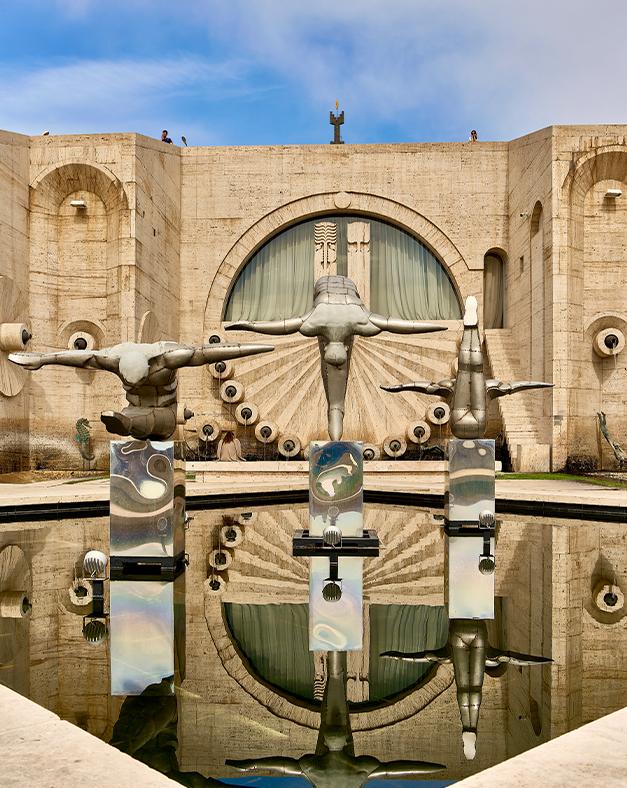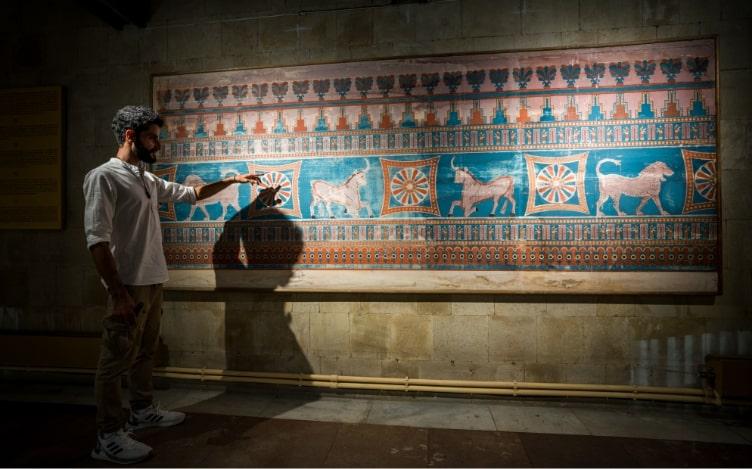Exploring Armenian Artisans: A Rich Tapestry of Tradition and Craftsmanship

From intricate cross-stones to modern copper jewellery, Armenia’s handicrafts reflect its rich cultural heritage, linking ancient traditions to decorative art. Read on for a closer look at the country’s artisanal landscape and try your hand at some of the crafts.
Traditional Armenian Crafts: A Time-Honored Legacy
Khachkar (Cross-Stone) Carving
Khachkars (cross-stones) are intricately carved steles that serve as memorial monuments and symbols of the Christian faith. There are more than 50,000 across Armenia! Visit Noratus Cemetery on the southern side of Lake Sevan to explore a collection of more than 1,000. While each has the same general design of a central cross surrounded by natural and geometric motifs, no two are exactly alike. Armenians have been making khachkars for more than 1000 years! Through the centuries, the craft has been passed down from master artisans to apprentices, who add their own unique improvisations and regional distinctiveness to the designs. In 2010, khachkars were included on UNESCO’s representative list of the Intangible Cultural Heritage of Humanity. The process of creating a khachkar involves selecting a large stone slab, usually tuff or basalt, and meticulously chiselling, then sand-blasting the design. Want to try your hand at the craft? There are multiple locations throughout the country where you can participate in a master-class.
Carpet Weaving
Armenia has a long and illustrious history of carpet weaving that dates back thousands of years. Traditionally, women played a crucial role in this craft, passing down their weaving skills and designs from one generation to another. Armenian carpets are renowned for their intricate patterns, vibrant colours, and high-quality craftsmanship. They feature traditional and region-specific motifs, including geometric shapes and floral patterns. Sometimes, words and stories were even woven into the designs to communicate a message. Natural dyes derived from plants and minerals were used to give the carpets their distinctive hues, particularly the bright red colour gained from the cochineal vordan karmir. Today, Armenian carpets continue to be produced using traditional techniques, and they are prized both domestically and internationally for their beauty and cultural significance. Many efforts are being made to preserve and promote this ancient art form. Visit the Megerian Carpet Museum in Yerevan to explore an impressive collection of antique and contemporary Armenian carpets or buy a piece for yourself at Yerevan’s Vernissage street market.
Woodworking and Duduk Making
Armenian woodworking is known for its intricacy and attention to detail. Artisans employ traditional carving techniques – often inspired by Armenian architecture and nature – on indigenous woods like walnut, cherry, and apricot to fashion functional and decorative items. Notable pieces include ornate furniture, intricately detailed religious artefacts and delicate musical instruments like the tar, kamancha and duduk. Dating back thousands of years, the duduk is one of the oldest double-reed instruments in the world. Carved from apricot wood, the duduk consists of a cylindrical body with eight finger holes and a large, conical reed made from cane. Haunting and melancholic, the duduk often evokes deep emotions. It plays a major role in traditional Armenian music and folk tunes from the Caucasus region. You’ve probably also heard it in the scores of Gladiator, Blood Diamond and other atmospheric films.
Due to its cultural significance and unique timbre, the duduk was inscribed into UNESCO's list of endangered intangible cultural heritage in 2008.
Pottery
As clay deposits richly abound in the Armenian highlands, pottery has remained one of Armenia’s most time-tested crafts. Dating back to the 3rd century CE, potters have thrown and shaped clay into karas (jars for fermenting wine), dishware and other household items like salt pots. Traditionally, these pots were shaped like a pregnant woman, highlighting the integral role that salt played in the process of life. You can observe beautiful shards of ancient vessels decorated with patterns and symbols in many of Armenia’s museums. To this day, contemporary ceramic artisans continue to infuse the timeless artistry with innovative twists. You can shape, throw, fire, paint and glaze your own piece of pottery at many workshops around the country.
Contemporary Artisans: Evolving Traditions
Make a copper necklace
In downtown Dilijan, stop by the Buduart studio to try your hand at the craft of modern jewellery making. Local artisans Arman Badeyan and Margarita Malkhasyan will guide you through the process of twisting soft copper wires into an intricate necklace, earrings, bracelet or hairpiece. You don’t need Pinterest for inspiration; before you visit Buduart, explore ancient jewellery motifs at the nearby Local Lore Museum.
Create your own folk art doll
Armenian doll making is an important folk art, particularly in rural regions. The dolls, which serve as decorative items and cultural symbols, are often dressed in regionally-specific traditional costumes. Through her social enterprise Mosh Studio in Yeghegnadzor, master Armine Aghajanyan empowers local women as tailors and designers, providing much-needed jobs. Armine’s textile designs feature floral patterns and solar deities found on cross-stones. Her work beautifully revives traditional Armenian artistic motifs through innovative touches. In Armine’s master class, you can create "wish-fulfilling dolls" using her fabric scraps. According to ancient Armenian beliefs, these dolls promote abundance, safety, fertility, and healing.
Weave a willow basket
Did you know you can make a basket, a dish, or even a wine bottle holder out of local willow branches? At the Yegheg studio in Yeghegnadzor, artisan Arthur Petrosyan will show you how. Willow-weaving is a time-honoured tradition in the Vayots Dzor region. By participating in Arthur’s workshop, you’ll learn all about the history of the craft, the natural materials, their preparation and the weaving technique itself. By the end of the masterclass, you’ll have a partially woven item to finish at home and display for all to see.
—
Besides what is mentioned above, you can explore the worlds of embroidery, leatherwork and silverwork during your stay. Each of these handicrafts showcase the artistic talent, creativity, and cultural pride of the Armenian people, and they continue to be cherished and preserved as valuable aspects of the country's identity.
Published on September 14, 2023



